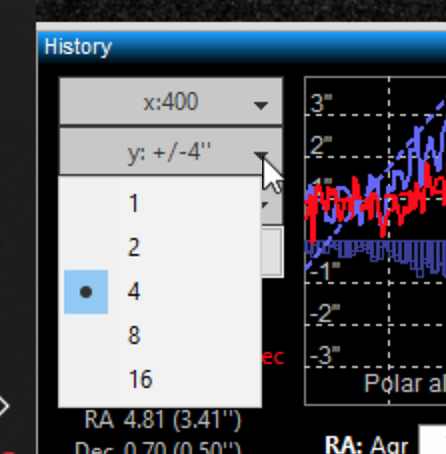Viewing time period – 22:07 – 04:23
Another evening commissioning the observatory, so tonight was about further refinement of the polar alignment. The main thing was to drift align with PHD again, but this time I would follow the instructions more carefully.
First I had to find a star near the celestial equator which was easier said than done. I little research showed me how to turn on the celestial equator line in The Sky X (TSX), which was essentially a database entry you enable that draws the line across the sphere of the sky using multiple points. The celestial equator is such a line running from East to West passing through the Meridian at an altitude of zero degrees. There were 3 databases to enable in TSX to create the visual effect.
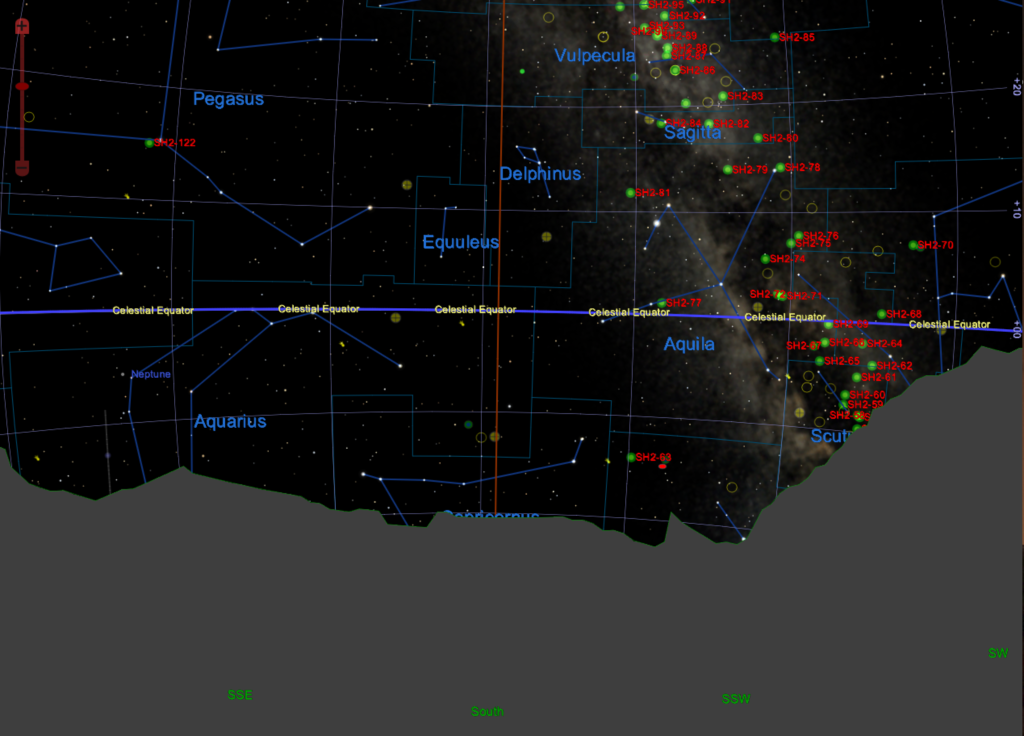
I then selected a star on this imaginary line and near the Meridian, the reason for this is that it would display the most movement and thus magnify the error of miss polar alignment.
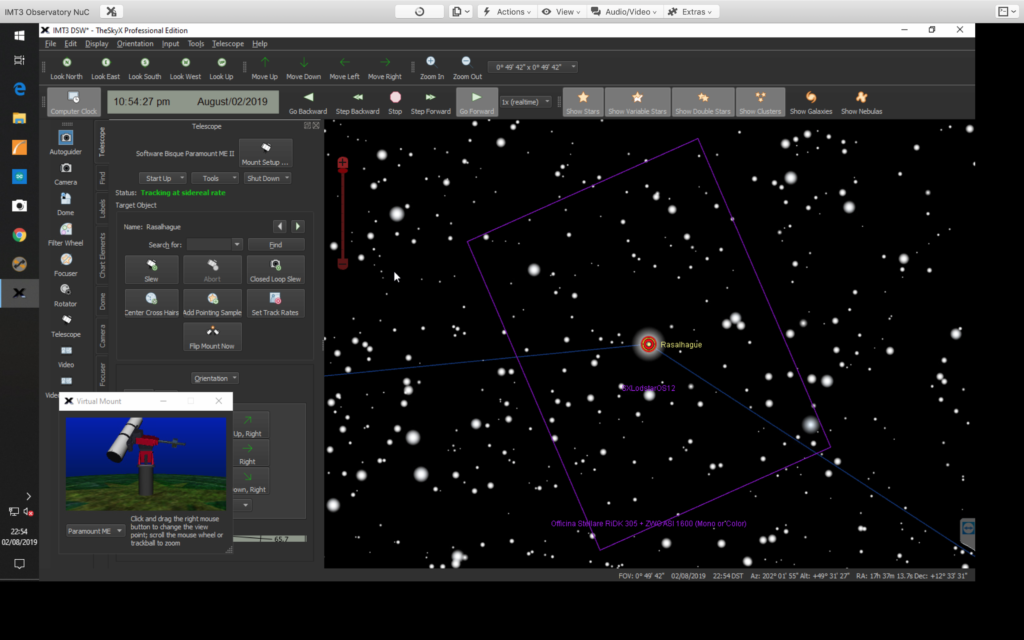
Next I performed an autofocus using the Luminance filter this worked well.
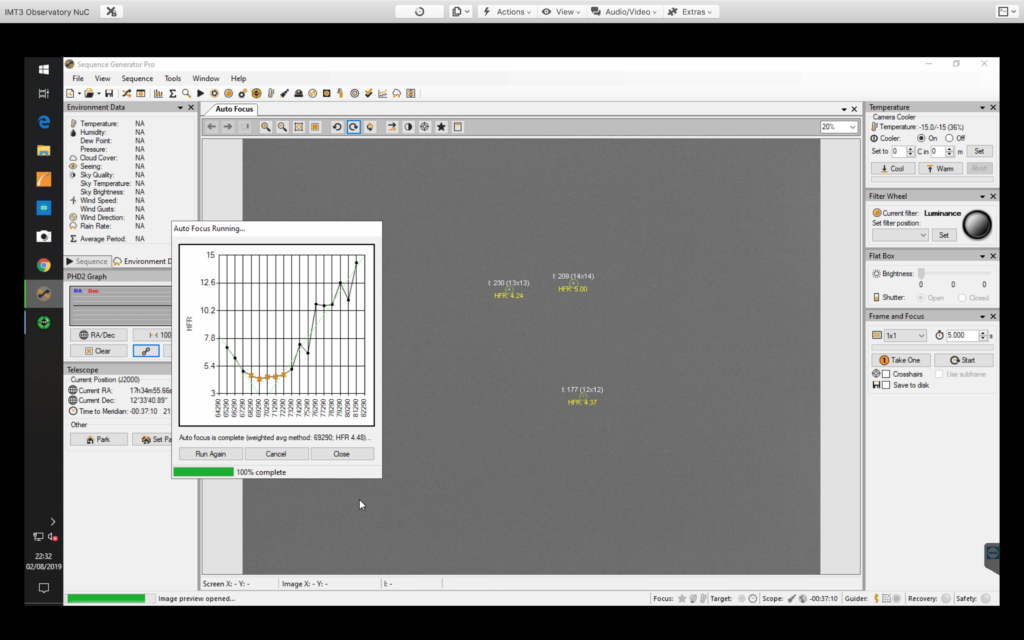
Rasalhauge was the star I choose for drift aligning the first part, a 5 second image within Frame and Focus in SGPro showed it spot on in the middle of the chip once I did a Slew and Solve.
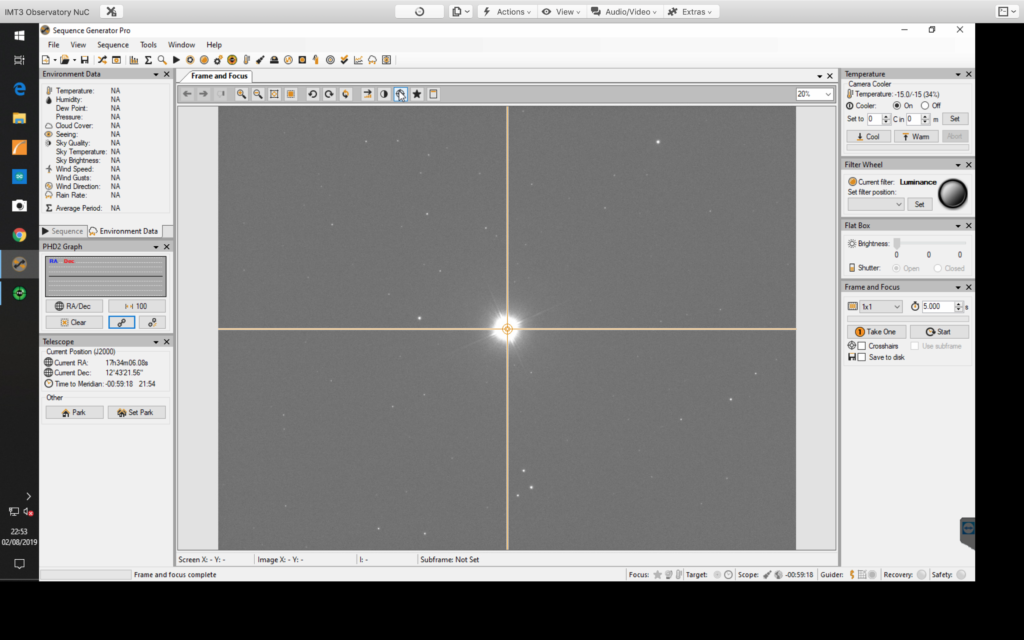
Now I needed to find a guide star nearby and place in the Lodestar FoV. This is routinely easy to do with the FoV displays I have placed on TSX.
The first thing to measure was the azimuth polar error and ignoring the RA line ALWAYS, I followed the Dec line and saw it was out by -1.14 and 75px) I adjusted the thruster knobs on the MEII to move the star to the outset edge of the purple circle showing the error. It is a 50/50 guess if you go the right way with the thrusters.
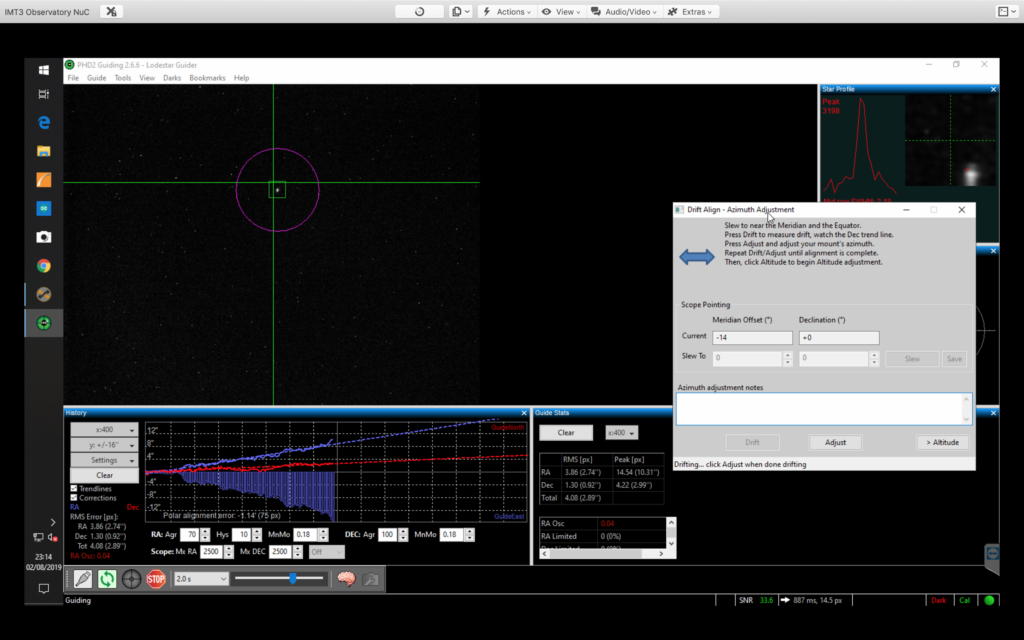
I then drifted again and of course realised I had indeed gone the wrong way as can be seen by the steeper DEC red line and the much larger purple circle.
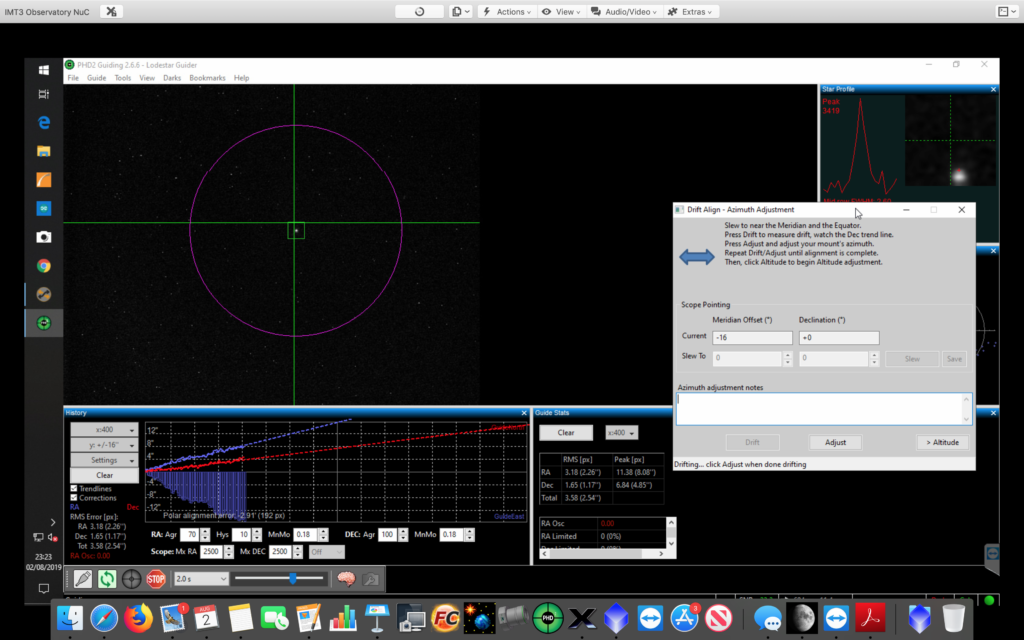
The graph on PHD2 can start to look fairly flat, so if you want to review the finer data underlying the straight line you can adjust the scale on the axis.
After getting the line fairly straight I then went on to drift align for the error in altitude. This time selecting a star in the West and near the celestial equator I chose Unukalhai in Serpens Caput.
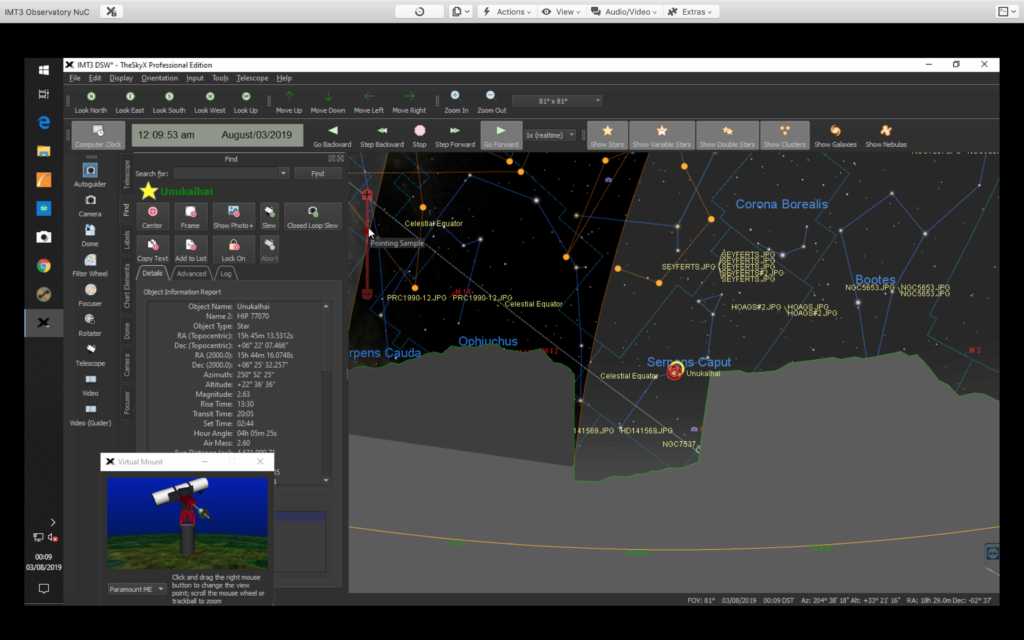
Once again I watched the DEC line only and ignored the RA, the DEC line this time reflecting the error in altitude. I then adjusted the mount using the altitude adjustment spanner moving the star again to the outside of the purple circle and then retested, finally getting the error down to a suitably small number. It was now 3am some 5 hours after I started!
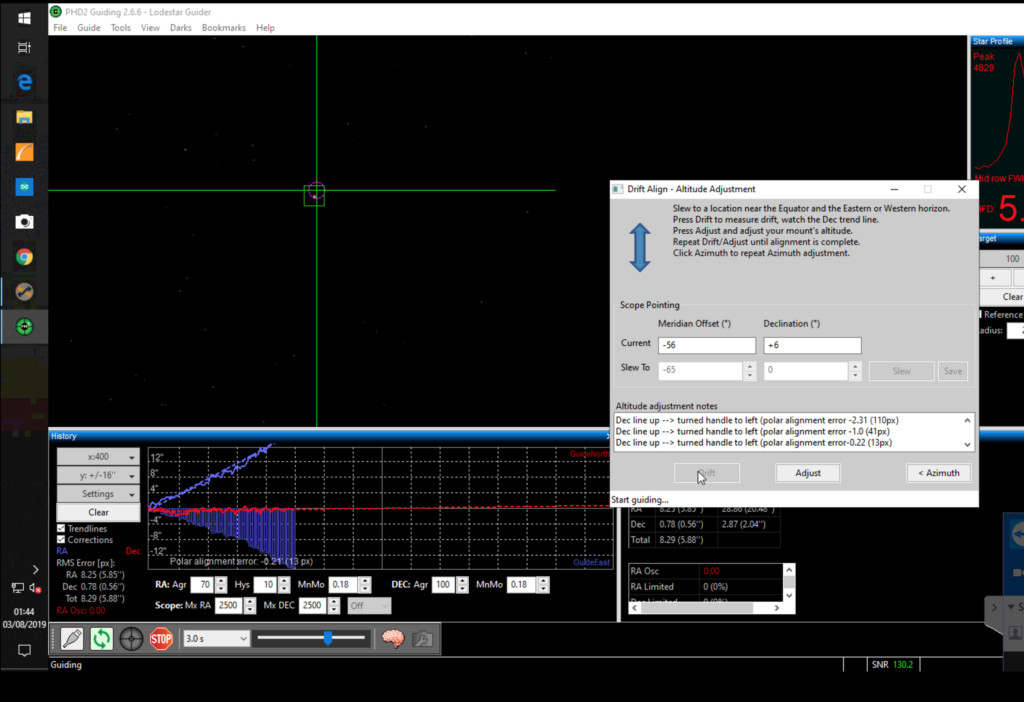
With now great polar alignment I thought I would attempt an image so wanted to slew to the Elephant Trunk again, IC1396. I performed a slew then plate solved. Of course the centre off the Elephant Trunk is actually the centre of the open cluster which IC1396 represents. I then moved manually to where I knew the nebula to be.
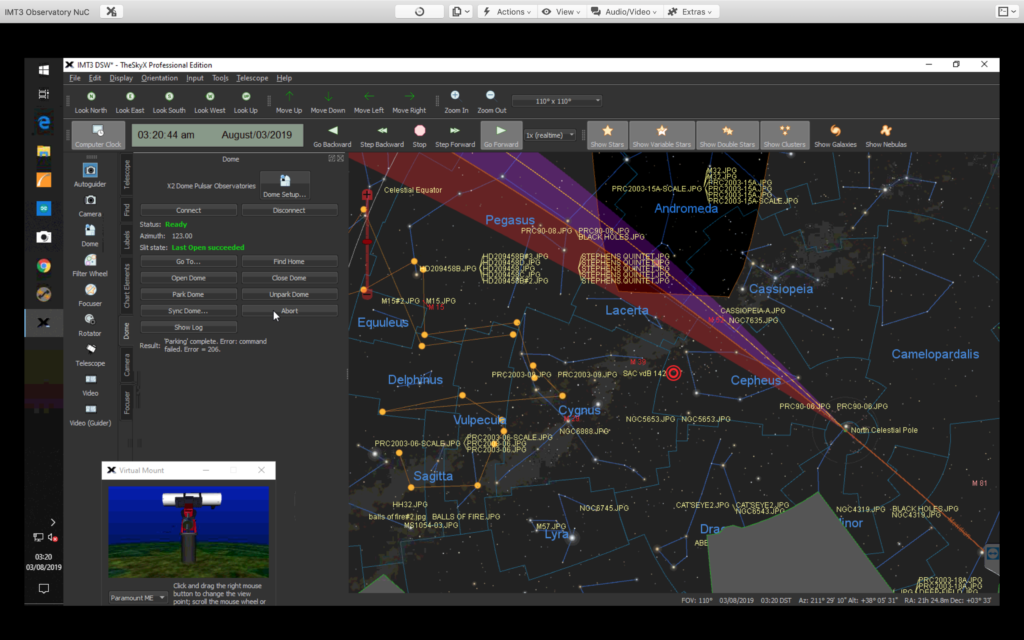
Unfortunately at this point I found that guiding, as despite unguided exposures now being a very real possibility, was not working, I could guide East and West but not North and South. I tried multiple settings but by 4am gave up and called it a night. The following day I would test during daylight and realise there was a setting that needed changing in PHD within the profile itself and upon correcting this guiding would then work the following evening.

